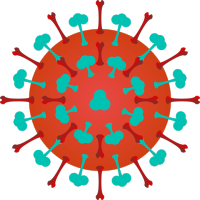| symptom | Myasthenia Gravis |
Traditional Chinese Medicine believes that this disease falls under the category of "atrophy-flaccidity disease" in TCM. It is often caused by overstrain, improper diet, and other factors that damage the spleen and kidneys, or due to congenital deficiencies leading to spleen and kidney deficiency. Spleen deficiency causes the sinking of middle qi, resulting in insufficient qi and blood, which leads to weakness in the limbs. Insufficient spleen yang damages kidney yang, and yang deficiency fails to warm and nourish, causing overall lack of strength and mental fatigue. Spleen yin deficiency damages kidney yin, and yin deficiency leads to depletion of essence and blood, exhaustion of the liver and kidneys, and malnutrition of muscles and tendons, resulting in atrophy. Alternatively, congenital kidney qi deficiency and original qi deficiency can cause the spleen and stomach to lose their warming and nourishing functions, leading to the onset of the disease.
bubble_chart Modern Research
Myasthenia gravis is an autoimmune disorder characterized by impaired neuromuscular transmission. The main features include significant muscle weakness and easy fatigability, with varying degrees of recovery after rest. The disease predominantly occurs between the ages of 15 and 35, with a higher prevalence in women. The onset is usually gradual, and the affected muscles vary among individuals and even within the same patient over time. While all muscles can be affected, ocular muscle weakness is the most common. Most patients experience periods of remission and relapse, or fluctuating severity. A minority may present with a fulminant form, where the condition rapidly deteriorates and can lead to death within weeks.
The exact disease cause and mechanism of disease are not fully understood. It is generally believed that a cellular immune response against acetylcholine receptors following viral infection is a significant factor in myasthenia gravis. The cause of the autoimmune process targeting acetylcholine receptors is currently thought to be related to thymic abnormalities in patients. The immune response damages the morphology and function of the postsynaptic membrane, leading to neuromuscular transmission disorders. Additionally, the occurrence of the disease is also associated with genetic factors.
[Diagnosis]History and clinical manifestations
- The disease can occur in all age groups but is most common between 15 and 30 years of age, with a higher prevalence in females.
- The onset is insidious and progresses slowly, although a few cases may present with a fulminant onset.
- The most commonly affected muscles are the extraocular muscles, presenting with ptosis, strabismus, and diplopia. It may also be accompanied by a weak voice, difficulty chewing, and swallowing disorders. In severe cases, it can affect all muscles, leading to bedridden status and respiratory difficulties.
- Typically, the affected muscles worsen with continuous movement and improve with rest. There is also a pattern of morning improvement and evening worsening. Factors such as infection and fatigue can exacerbate the condition.
- Early in the course of the disease, spontaneous remission and relapse are common, while advanced stages often present with persistent impairment.
Serum anti-acetylcholine receptor antibody testing has a positive rate of approximately 80%. However, it may yield negative results in the early stages or in cases of pure ocular myasthenia.
Other tests: Electrostimulation test, Tensilon test, neostigmine test, and ice pack test may yield positive results. Chest X-ray or CT scan may be necessary to determine the presence of thymoma or other thymic abnormalities.
- Qi Sinking︰Ptosis of the eyelid, diplopia, strabismus, pale and dull complexion, poor appetite, loose stools, mental fatigue, lack of strength, shortness of breath, reluctance to speak, or grade I weakness in the limbs. The tongue is pale with a white coating, and the pulse is thin and weak. Commonly seen in ocular myasthenia. Treatment involves tonifying the middle and replenishing qi, raising yang, and elevating the drooping. Modified Middle-Tonifying Qi-Replenishing Decoction: Codonopsis Root 30g, Prepared Liquorice Root 10g, White Atractylodes Rhizome 10g, Chinese Angelica 10g, Dried Tangerine Peel 10g, Raw Astragalus Root 30g, Cimicifuga Rhizome 5g, Bupleurum 5g, Chinese Yam 30g, Hyacinth Bean 10g, Solomonseal Rhizome 10g, Human Placenta 10g. For chest tightness, gastric stuffiness, and greasy tongue coating, add Atractylodes Rhizome and Fortune Eupatorium 10g each; for poor appetite, add Hawthorn Fruit, Germinated Barley, and Millet Sprout 15g each; for cold limbs, add Dodder Seed, Morinda, and Prepared Rehmannia Root 15g each.
- Deficiency of Both Qi and Yin︰Drooping eyelids, double vision or strabismus, limb weakness, shortness of breath with reluctance to speak, spontaneous sweating or night sweats, dry mouth and throat, irritability, dry stools. The tongue is red with scant coating, and the pulse is wiry-thin or thin-rapid. This pattern is commonly seen in ocular myasthenia or generalized myasthenia gravis with bulbar muscle weakness. The treatment principle is to tonify qi and nourish yin. Modified Six-Ingredient Rehmannia Decoction combined with Pulse-Reinforcing Powder is used: 15g each of raw and prepared Rehmannia root, 15g of Cornus officinalis, 30g of Chinese yam, 25g of Pseudostellaria heterophylla (or 6g of American ginseng), 15g of Ophiopogon japonicus, 10g of Schisandra chinensis, 15g of Poria cocos, 30g of raw Astragalus root, 10g of peony root, 10g of Angelica sinensis, 6g of human placenta powder (to be taken infused), 10g of Polygonatum odoratum, and 6g of prepared licorice root. For spontaneous sweating, add 30g of light wheat; for night sweats, add 10g of Lycium chinense root bark and 6g of Phellodendron bark; for drooping eyelids, add 6g each of Cimicifuga rhizome and Bupleurum, and 15g of Pueraria root; for dry stools, add 20g of Scrophularia root.
- Spleen-kidney Yang Deficiency︰Drooping eyelids, limited eye movement, lack of strength in limbs with cold intolerance, fear of cold, spontaneous sweating, hoarse voice, difficulty swallowing, normal appetite with loose stools, weak waist and knees. Pale tongue with white, moist coating; deep and thin pulse. Commonly seen in generalized type with bulbar muscle weakness. Warming and tonifying the spleen and kidney. Modified Right-Restoring Decoction combined with Middle-Regulating Decoction. Prepared Rehmannia Root 30g, Prepared Aconite Lateral Root 10g, Dried Ginger 10g, Morinda 30g, Red Ginseng 6g, Chinese Yam 30g, Raw Astragalus Root 30g, White Atractylodes Rhizome 10g, Cornus Officinalis 10g, Prepared Liquorice Root 10g. For loose stools, add Psoralea 10g, Blast-Fried Ginger 6g. For prolonged or severe cases, add Human Placenta 6g (infused), Cervi Deer-Horn Glue 15g.
Zhao Shaoqin's Medical Case
A 52-year-old woman, first consultation in the autumn of 1965. Suffering from severe myasthenia gravis, she was hospitalized for half a year, taking only warming and tonifying nourishing types such as Bazhen, Shiquan Dabu, Guipi, Zuogui, and Yougui, with little effect. Four days ago, due to a sudden fever (38.5°C), her condition changed drastically, requiring neostigmine injections before meals to have the strength to eat, and her body temperature gradually increased, so I was invited for a consultation. The patient had a shallow yellow complexion, was thin and emaciated, listless, with difficulty opening her eyes, a swollen tongue with white, rough, and dry coating, weak and soggy pulses, slightly slippery upon pressure, and deep, thin, and slightly rapid pulses. A picture of extreme weakness, but with restlessness, many dreams, yellow urine, bowel movements every two days, and a strong body heat (39.4°C).
All doctors believed that long-term pestilent qi and great blood deficiency, apart from relieving fever with sweet and warm methods, there was no good alternative. After much thought, I said, yang deficiency and weak qi, the method should be sweet and warm, even if the dosage is small, the tendency of the disease should slightly lessen, how could the heat increase after treating the symptoms? New diseases are mostly excess but can also be deficient, chronic diseases are mostly deficient but can also be excess, and deficiency syndromes may include excess pathogens, excess syndromes may also include deficiency, true and false deficiency and excess, complex and unpredictable, the disease has no fixed form, but treatment has fixed principles. This disease with high fever, taking sweet and warm methods but the tendency of the disease continues to increase, the pulse manifestation is weak and soggy but slightly slippery upon pressure, deep, thin, and slightly rapid. This belongs to a fundamental deficiency with superficial excess, true deficiency with new contraction excess pathogen, resembling the White Tiger syndrome. It is advisable to try the White Tiger method to observe the response.
I asked the attending doctor to give the patient 200ml of boiled water little by little, after drinking, the patient still asked for cold water, this is thirst for cold drinks, another 200ml was given, after drinking, she fell asleep peacefully, and there seemed to be a slight sweat on her forehead. Considering her pulse, tongue color, and symptoms, it is not mainly a fundamental deficiency, but a sign of superficial heat. If it were deficiency heat, how could she thirst for cold drinks, and after drinking, have a slight sweat and fall asleep? Also, her tongue is white, rough, and dry, the pulse manifestation is thin, wiry, and rapid, restless with many dreams, yellow urine, and dry stool, diagnosed as Yangming qi aspect heat. Although the patient's constitution is deficient in qi and blood, now because the pathogen has transformed into heat, it has become a superficial heat excess syndrome, so it is changed to the White Tiger's pungent and cool method, seeking the effect of the tiger's roar bringing wind and the golden breeze dispelling heat. The prescription is:
1 dose, decocted to 100ml, taken in two doses. After taking the medicine, she sweated at night and the body heat subsided, the body temperature returned to normal, the pulses were weak and soft but slippery, thin and weak upon pressure, no longer wiry and rapid. The patient's spirit was normal, appetite increased, changed to engendering liquid with sweet-cold tonifying qi method to follow up.







